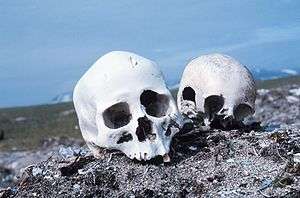Forensic radiology
| Forensic science |
|---|
 |
| Physiological sciences |
| Social sciences |
| Forensic criminalistics |
| Digital forensics |
| Related disciplines |
| Related articles |
Forensic radiology is the discipline which comprises the performance, interpretation and reportage of the radiological examinations and procedures which are needed in court procedures or law enforcement.[1] Radiological methods are widely used in identification, age estimation and establishing cause of death. Comparison of ante mortem and post mortem radiographs is one of the means of identification.[2] The scanning of baggage, vehicles and individuals have many applications.
Tools like multislice helical computed tomography can be used for detailed documentation of injuries, tissue damage and complications like air embolism and pulmonary aspiration of blood. This type of digital autopsies offer certain advantages when compared to traditional autopsies.[3]
References
- ↑ Thali Michael J.; B. G. Brogdon; Mark D. Viner (1998). Forensic Radiology. CRC Press LLC. p. 4. ISBN 0849381053. Retrieved 10 July 2014.
- ↑ B, Ajay (March 1, 2014). "CHEST X-RAY COMPARISON FOR IDENTIFICATION– A CASE REPORT". Journal of South India Medico-Legal Association. 6 (1): 35 to 38. Retrieved 10 July 2014.
- ↑ Michael J, Thali; Wolf, Schweitzer; Kathrin, Yen; Peter, Vock; Christoph, Ozdoba; Elke, Spielvogel; Richard, Dirnhofer (March 2003). "New Horizons in Forensic Radiology: The 60-Second "Digital Autopsy—Full-Body Examination of a Gunshot Victim by Multislice Computed Tomography". The American Journal of Forensic Medicine and Pathology. 24 (1): 22–27.